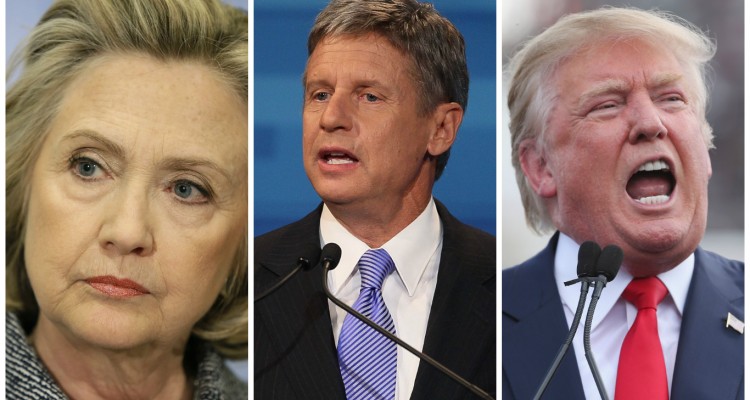
Wednesday, a poll conducted by pollster Evolving Strategies for Ballotpedia reported that presumptive Democratic nominee Hillary Clinton leading presumptive Republican nominee Donald Trump in Michigan by seventeen points. The next day, June 30, pollster Greenberg Quinlan Rosner released a poll commissioned by Democracy Corps showing Clinton with a lead of fifteen percent in the Great Lakes State.
The survey of 300 likely Michigan voters found forty-eight percent supporting Clinton, thirty-three percent favoring Trump, and twelve percent answering they would vote for Libertarian Party nominee Gary Johnson. This was Clinton's largest lead in any of the nine battleground states surveyed, which included the Rust Belt states of New Hampshire, Ohio, Pennsylvania, and Wisconsin in addition to Michigan along with the Sun Belt states of Arizona, Florida, Nevada, and North Carolina, which the polling firm classified as "diverse states."
Clinton led Trump by an average of eight percent in all nine states, whether Rust Belt or Sun Belt. However, she had a lower level of support in the Rust Belt states, forty-four percent in the Rust Belt as opposed to forty-seven percent in those labeled diverse. Trump's average also dropped, falling from thirty-nine percent in the diverse states to thirty-six percent in the Rust Belt.
After Michigan, Clinton had the largest lead in Wisconsin, where she was ahead of Trump by twelve percent. Florida came next with twelve percent, followed by North Carolina with ten percent and Pennsylvania at nine percent.
The poll found Clinton and Trump tied in Nevada, New Hampshire, and Ohio. Trump led only in Arizona with a margin of six percent.
Johnson was the one candidate who fared better in the Rust Belt. An average of thirteen percent of those responding in the Rust Belt states supported him, while only nine percent of those in the diverse states did. He earned the most support in Wisconsin with sixteen percent and the least in North Carolina with eight percent.
Nate Silver of FiveThirtyEight.com included the poll in his presidential election forecast, but it had little effect on the projected outcome. Clinton's odds of winning Michigan remained at ninety-one percent, Trump at just over nine percent, and Johnson at two-tenths of a percent chance of winning the state. Clinton is still projected to receive just less than fifty percent of the vote in the state and Trump a little more than thirty-eight percent, while Johnson's projected vote share fell from nearly eleven percent to just over ten percent between Thursday and Friday.
No comments:
Post a Comment